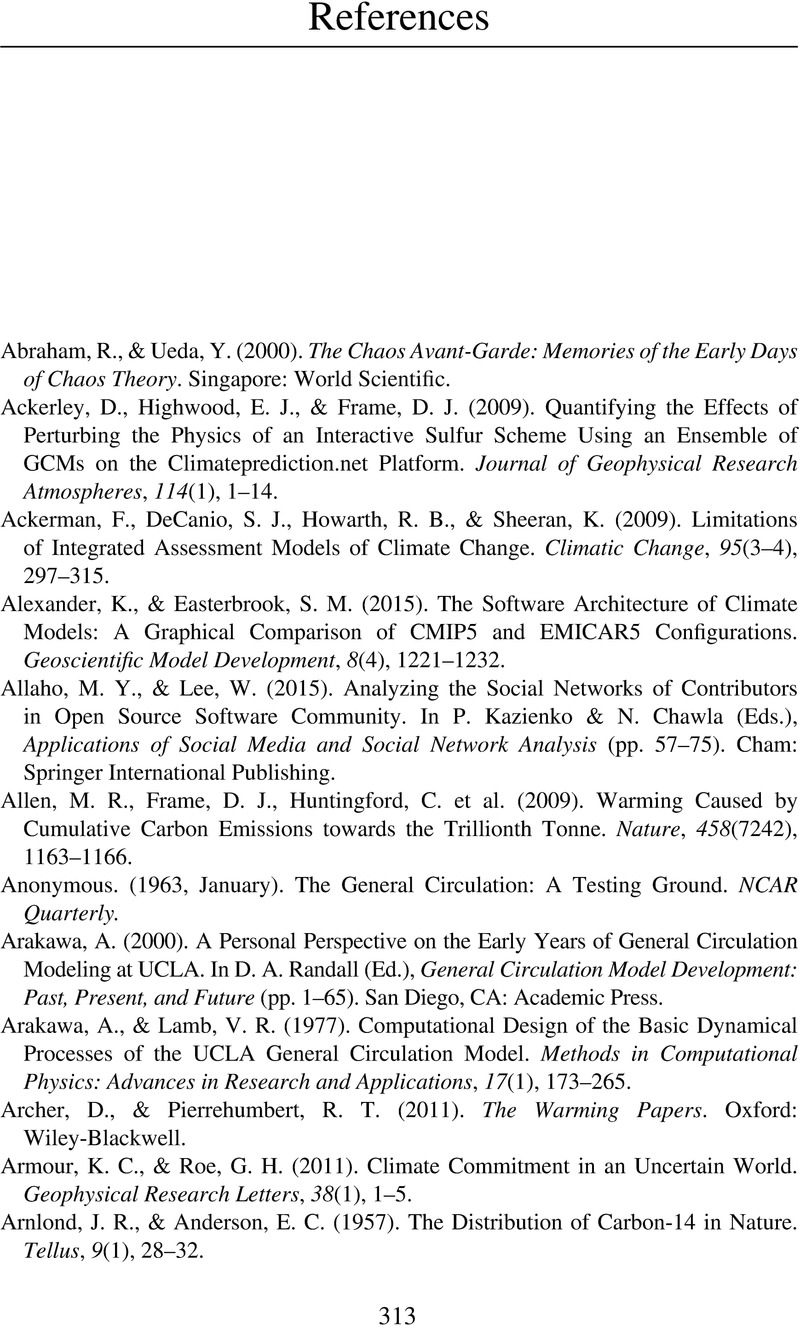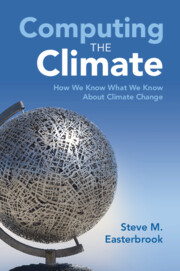Book contents
- Computing the Climate
- Epigraph
- Computing the Climate
- Copyright page
- Contents
- Preface
- Acknowledgements
- 1 Introduction
- 2 The World’s First Climate Model
- 3 The Forecast Factory
- 4 Taming Chaos
- 5 The Heart of the Machine
- 6 The Well-Equipped Physics Lab
- 7 Plug and Play
- 8 Sound Science
- 9 Choosing a Future
- References
- Index
- References
References
Published online by Cambridge University Press: 10 August 2023
- Computing the Climate
- Epigraph
- Computing the Climate
- Copyright page
- Contents
- Preface
- Acknowledgements
- 1 Introduction
- 2 The World’s First Climate Model
- 3 The Forecast Factory
- 4 Taming Chaos
- 5 The Heart of the Machine
- 6 The Well-Equipped Physics Lab
- 7 Plug and Play
- 8 Sound Science
- 9 Choosing a Future
- References
- Index
- References
Summary

- Type
- Chapter
- Information
- Computing the ClimateHow We Know What We Know About Climate Change, pp. 313 - 327Publisher: Cambridge University PressPrint publication year: 2023

